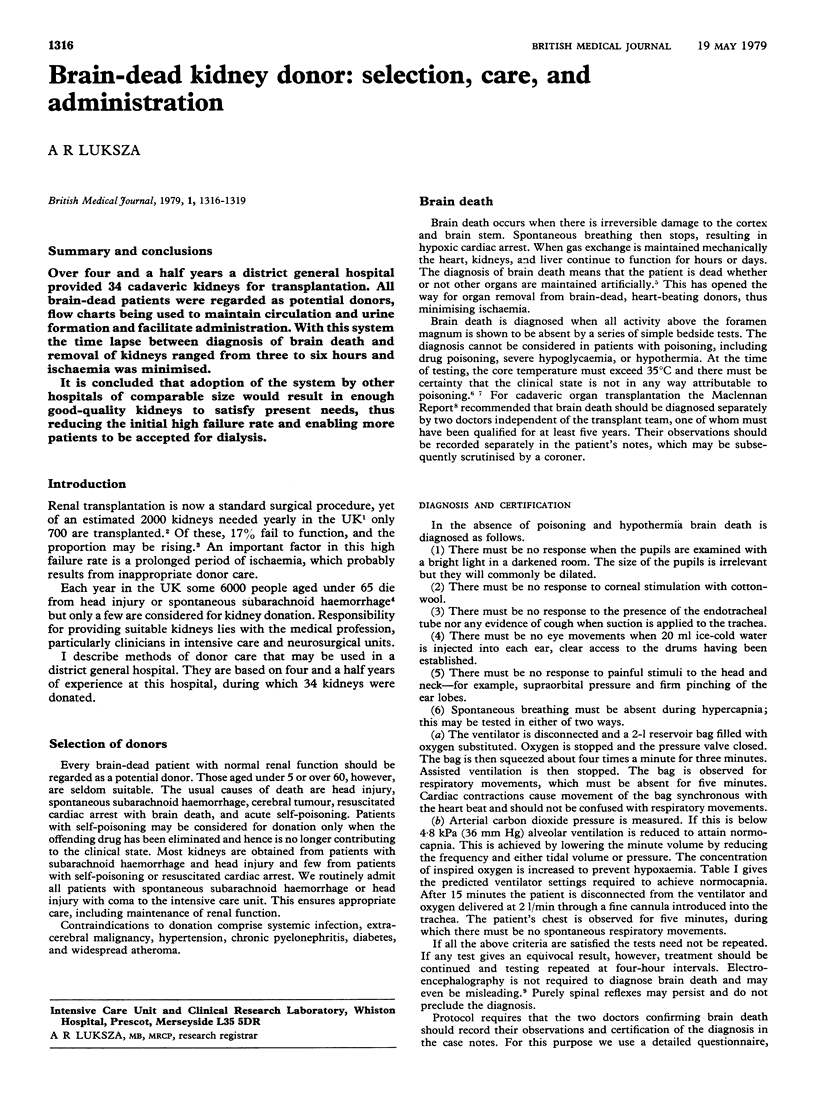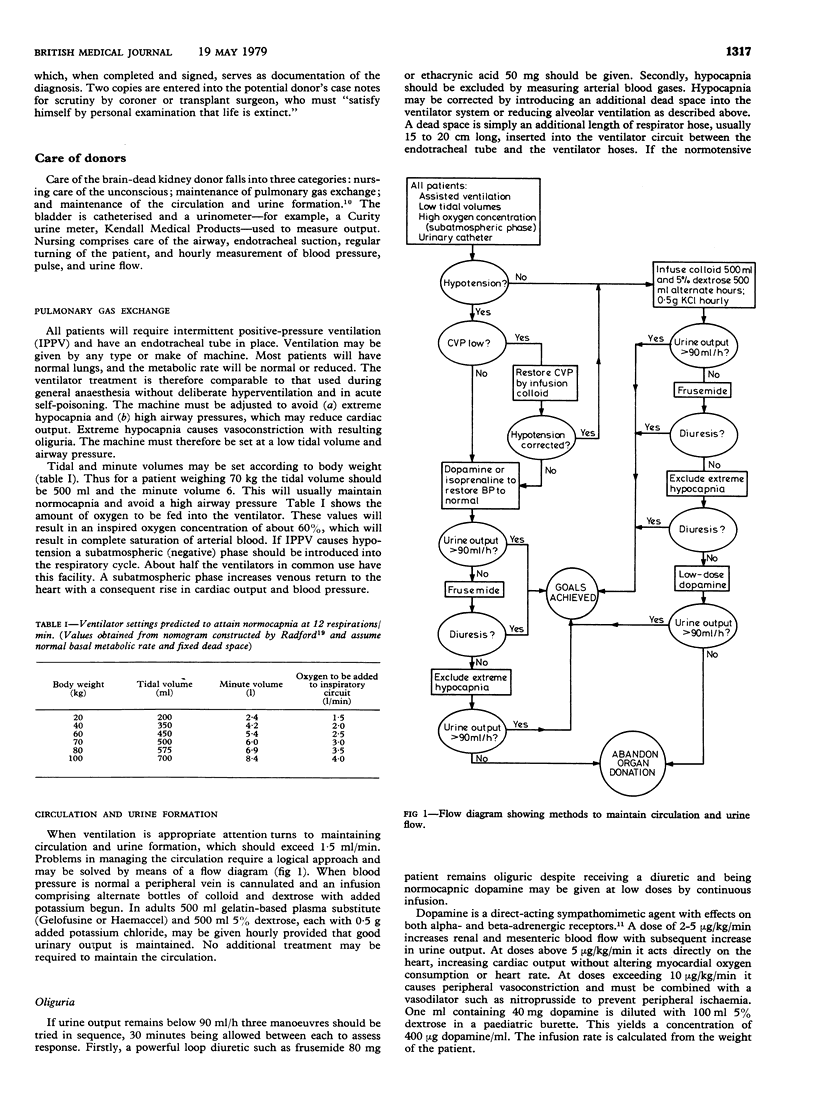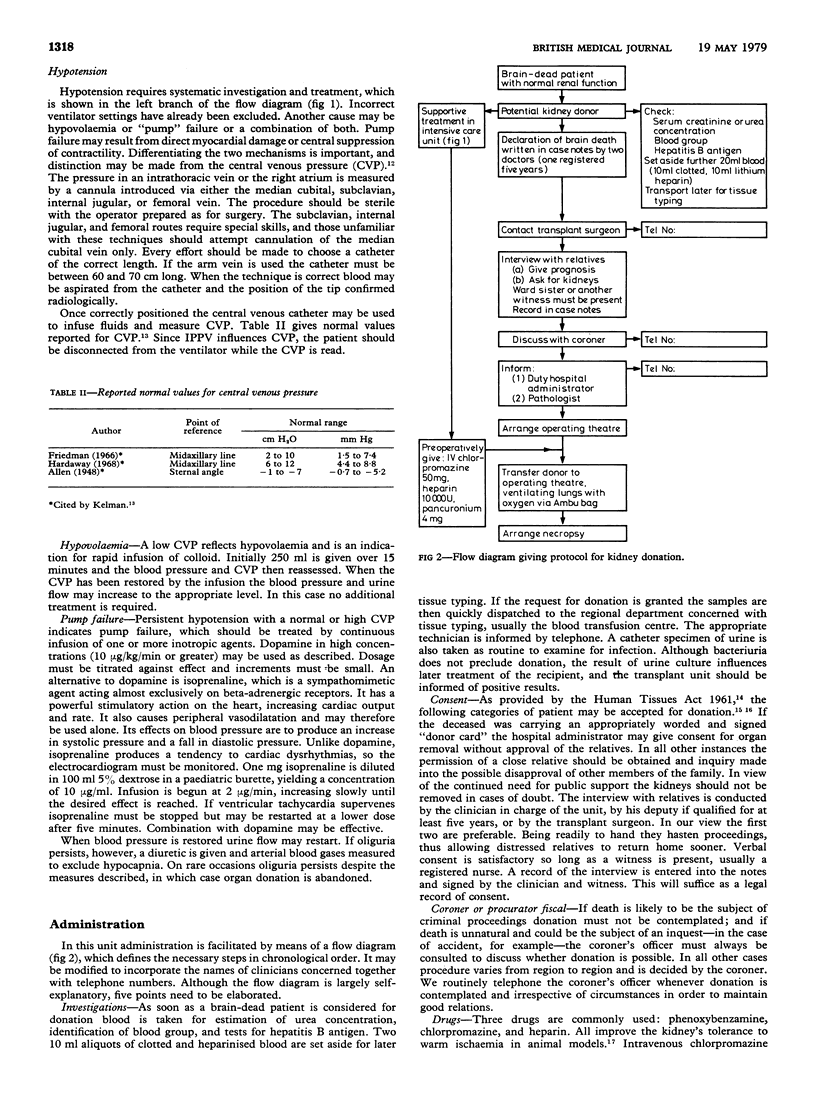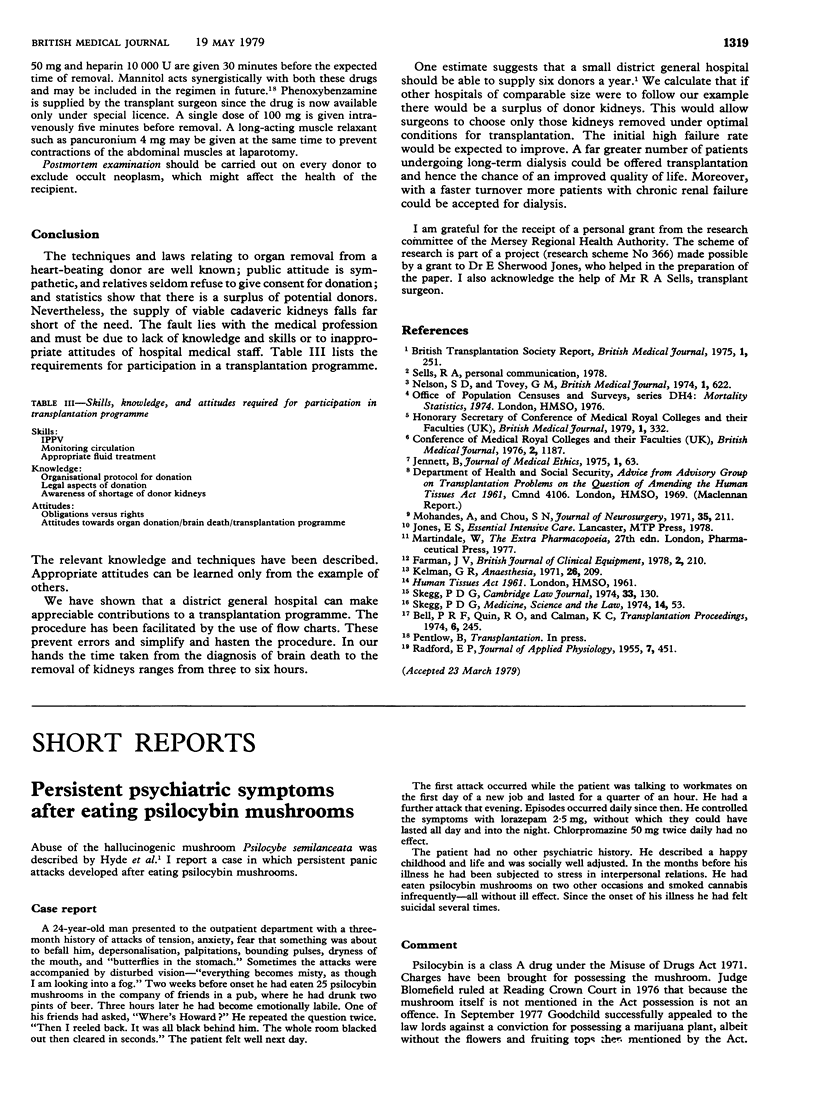Abstract
Over four and a half years a district general hospital provided 34 cadaveric kidneys for transplantation. All brain-dead patients were regarded as potential donors, flow charts being used to maintain circulation and urine formation and facilitate administration. With this system the time lapse between diagnosis of brain death and removal of kidneys ranged from three to six hours and ischaemia was minimised. It is concluded that adoption of the system by other hospitals of comparable size would result in enough good-quality kidneys to satisfy present needs, thus reducing the initial high failure rate and enabling more patients to be accepted for dialysis.
Full text
PDF



Selected References
These references are in PubMed. This may not be the complete list of references from this article.
- Bell P. R., Quin R. O., Calman K. C. Donor pretreatment and organ preservation. Transplant Proc. 1974 Sep;6(3):245–248. [PubMed] [Google Scholar]
- Jennett B. The donor doctor's dilemma: observations on the recognition and management of brain death. J Med Ethics. 1975 Jul;1(2):63–66. doi: 10.1136/jme.1.2.63. [DOI] [PMC free article] [PubMed] [Google Scholar]
- Kelman G. R. Interpretation of CVP measurements. Anaesthesia. 1971 Apr;26(2):209–215. doi: 10.1111/j.1365-2044.1971.tb04764.x. [DOI] [PubMed] [Google Scholar]
- Mohandas A., Chou S. N. Brain death. A clinical and pathological study. J Neurosurg. 1971 Aug;35(2):211–218. doi: 10.3171/jns.1971.35.2.0211. [DOI] [PubMed] [Google Scholar]
- Nelson S. D., Tovey G. H. National organ matching and distribution service. Br Med J. 1974 Mar 30;1(5908):622–624. doi: 10.1136/bmj.1.5908.622. [DOI] [PMC free article] [PubMed] [Google Scholar]
- Skegg PDG. Irreversibly comatose individuals: "alive" or "dead". Camb Law J. 1974 Apr;33(1):130–144. doi: 10.1017/s0008197300091327. [DOI] [PubMed] [Google Scholar]


